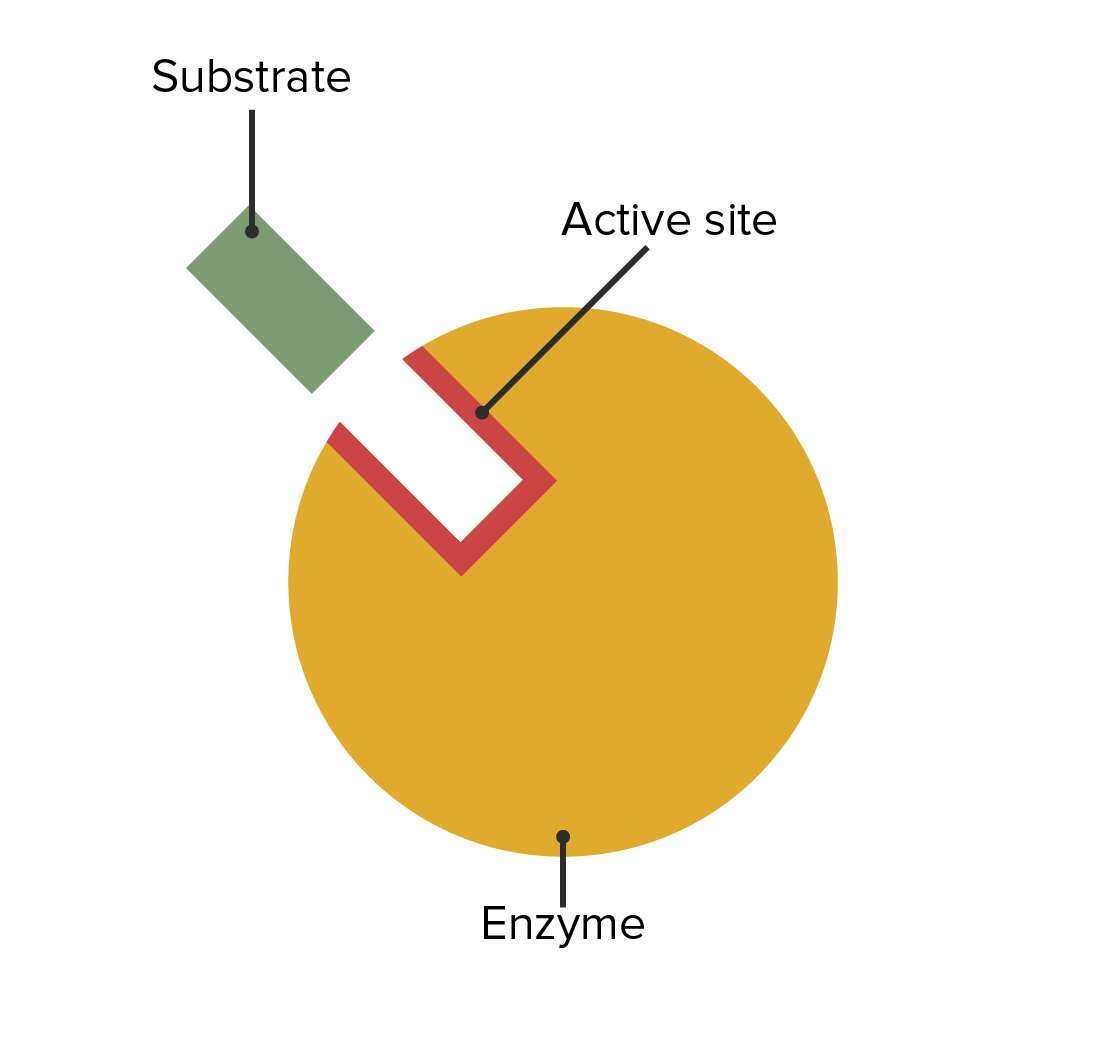Playlist
Show Playlist
Hide Playlist
Roles of Enzymes
-
Slides 11 Chemistry Advanced Le Gresley.pdf
-
Download Lecture Overview
00:01 So, roles of enzymes within organisms. 00:05 The recognition and catalytic abilities of enzymes come about through specific interactions with functional groups in the active sites. And if we had to take, for example, esterase enzymes which are found in the blood stream and indeed throughout the body, these enzymes are responsible for the hydrolysis of ester groups. 00:23 Therefore, any drug or substrate containing an ester which enters the blood stream is normally hydrolyses... hydrolysed by these systemic esterases. Esterases have the ability to bind to a wide variety of substrates provided they have this ester linkage. 00:45 As we will be discussing a little later on when we come on to the pro-drugs lecture, pro-drugs themselves are often activated by esterases. And the enzyme works by binding the substrate and also, crucially, a molecule of water that ultimately performs the hydrolysis itself. Acid in basic groups in the active site catalyse the reaction, as we will see. 01:08 So, here let’s have a look and idealise hydrolysis of an ester. The black line is to represent the pocket or active site of our enzyme. In this case, an esterase active site, which is written in black. 01:23 The ester, which you should recognise from the Module III discussion of functional groups, is shown here in green. 01:30 Note, carbonyl carbon attached to the oxygen from that carbonyl and then you have got the two alcohol groups on either side. Also note, in red, we show that the participating water is also present in the active site. 01:44 In the first instance, we have a NH2 side chain, a part of the active site, shown in yellow, and a carboxylic acid side chain is part of the active site, shown in blue. 01:57 Now, the origins of this side chain can obviously vary. But, for example, the blue carboxylic acid side chain could belong to the amino acid: glutamic acid or indeed, aspartic acid. 02:11 If we look at the NH2 side chain, shown in yellow, this could be the side chain from, for example, lysine. 02:16 What’s happening, in this case, is the electron pair from a lysine nitrogen is donated onto a hydrogen, breaking open that bond and releasing, to all intents and purposes, hydroxide anion. 02:31 This, then, attacks the carbonyl at the ester and furthermore, a proton is abstracted from the glutamic or aspartic acid showed in blue. 02:43 This results in converting what is essentially an sp2 hybridised carbon and oxygen system to a tetrahedral one, which is shown here. 02:50 Here you can see sp3 hybridised carbon in the center, shown as green, and the water OH, which was originally red, is now attached to that carbonyl carbon. From here, as you can appreciate, couple of different reactions could occur. 03:07 Either we lose the OH- again and the ester is reformed or as shown in this case, we lose the alkoxy group, shown as O-R1, on our particular diagram, thus producing a free alcohol and alcohol carboxylic acid, which is shown on the right hand side of the board. 03:31 If you can pair this mechanism to an ester hydrolysis with a typical lab based system, you will find there isn’t a great lack of similarity here. You just have to make sure that all of the actors in this particular reaction are closed together. And by binding a system close to where the catalytic region is, it’s possible to actually achieve a high turnover of ester hydrolysis then it would be in the laboratory.
About the Lecture
The lecture Roles of Enzymes by Adam Le Gresley, PhD is from the course Medical Chemistry.
Included Quiz Questions
In the active site of an enzyme, an amine group (which does not take part in any specific reaction) within a substrate molecule may do which of the following?
- Forms hydrogen bonds with the active site.
- Undergoes permanent ester bond formation.
- Undergoes covalent bonding with the active site.
- Undergoes permanent ether bond formation.
- None of the above
Substrate recognition and catalytic abilities of an enzyme are determined by which of the following?
- Specific interactions of functional groups in the active site of the enzyme.
- Non-specific interactions of functional groups in the active site of the enzyme.
- Activation energies of the reaction.
- Temperature of the reaction mixture.
- Gaseous environment in the catalytic site of the enzyme.
Which enzyme is responsible for the conversion of Tamiflu (prodrug) to its active form when it is taken orally?
- Hepatic esterase
- Lipase
- DNA ligase
- Acid-thiol ligase
- Alcohol dehydrogenase
The active site of an esterase contains which of the following?
- Acidic and basic groups of constituent amino acids which participate in the enzymatic conversions.
- Alcoholic groups of sugars, which constituted the enzyme, participate in the enzymatic conversions.
- Ester groups of sugars, which constituted the enzyme, participate in the enzymatic conversion.
- Alkyne bonds of constituent amino acid participate in the enzymatic conversions.
- Phospodiester bonds of constituent nucleotide units of enzyme participate in the enzymatic reactions.
Customer reviews
5,0 of 5 stars
| 5 Stars |
|
5 |
| 4 Stars |
|
0 |
| 3 Stars |
|
0 |
| 2 Stars |
|
0 |
| 1 Star |
|
0 |




